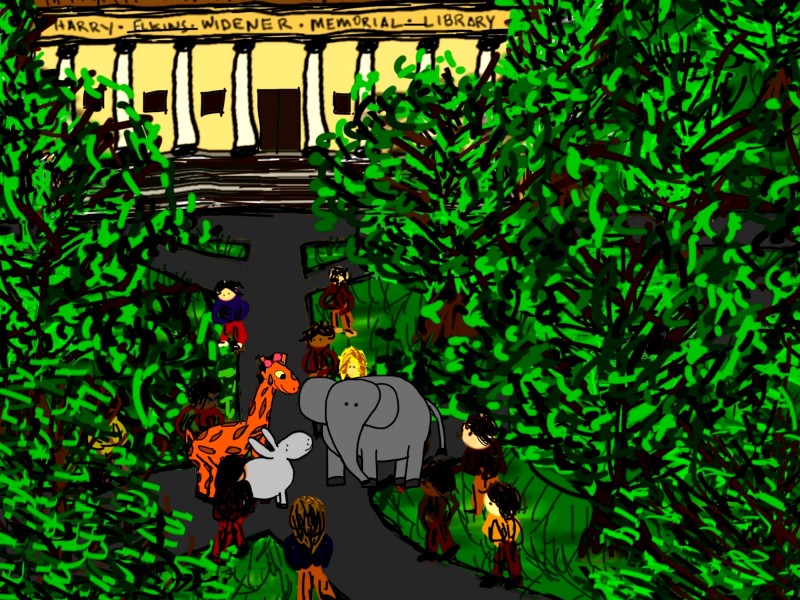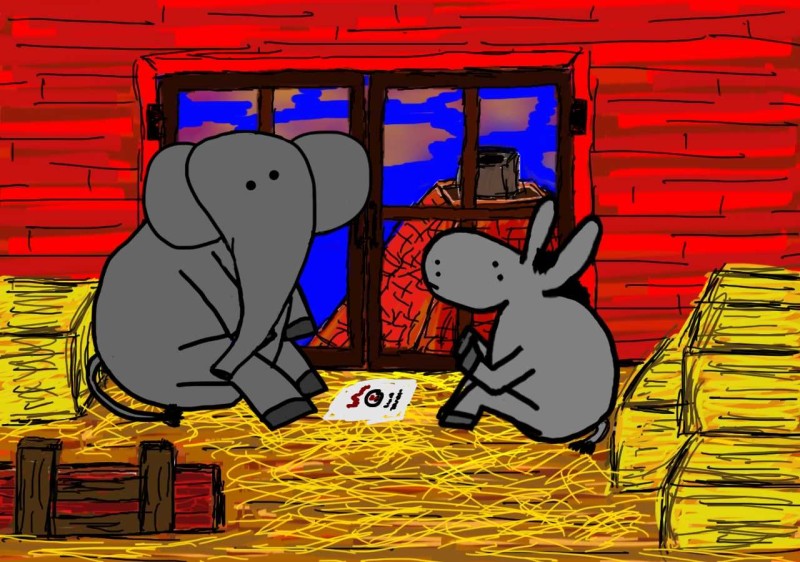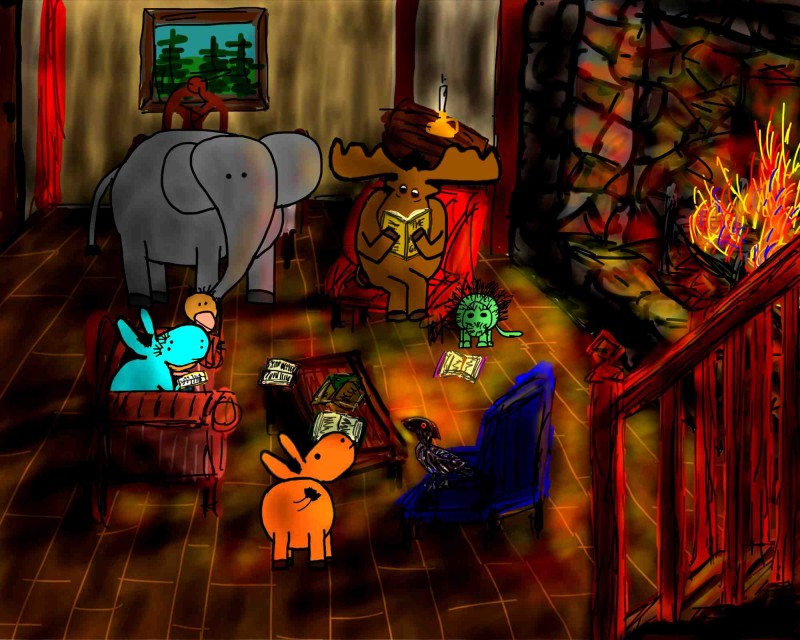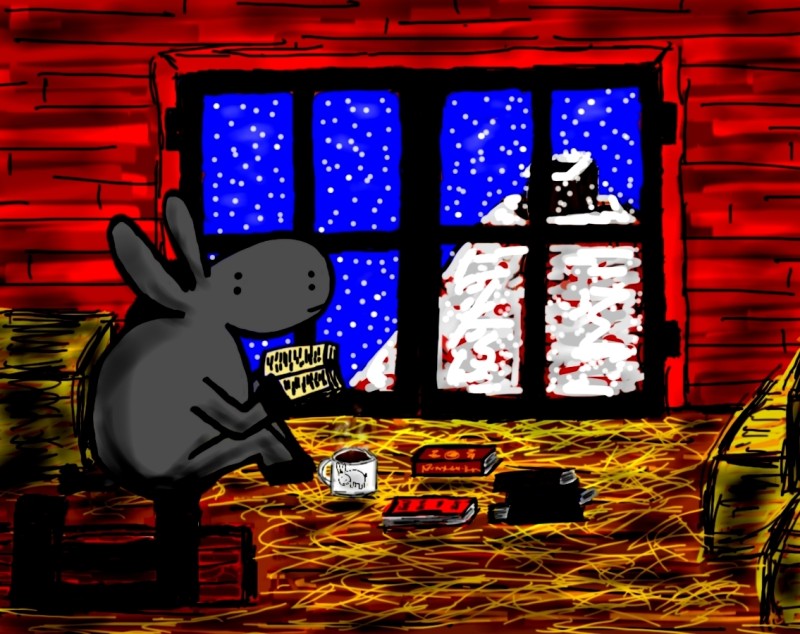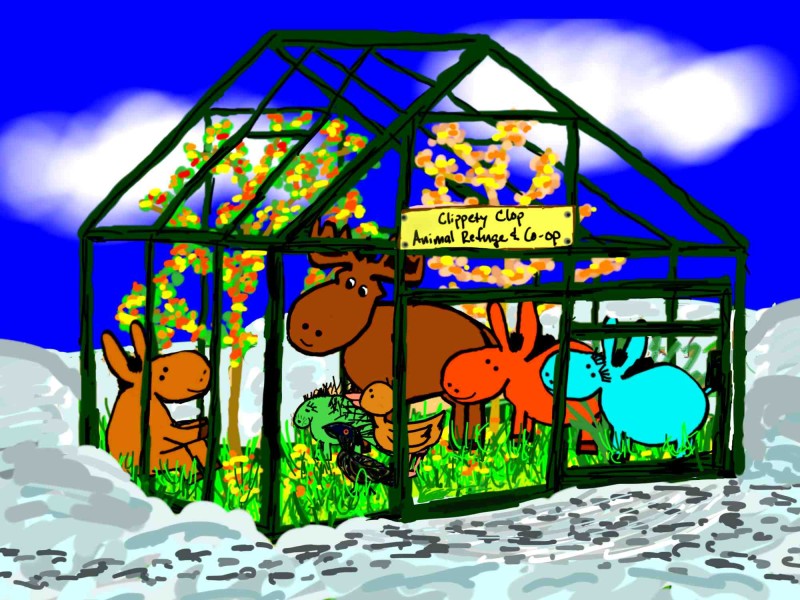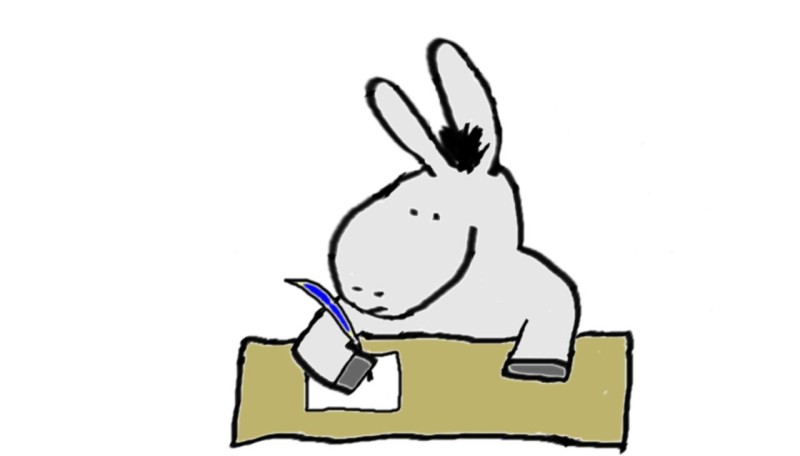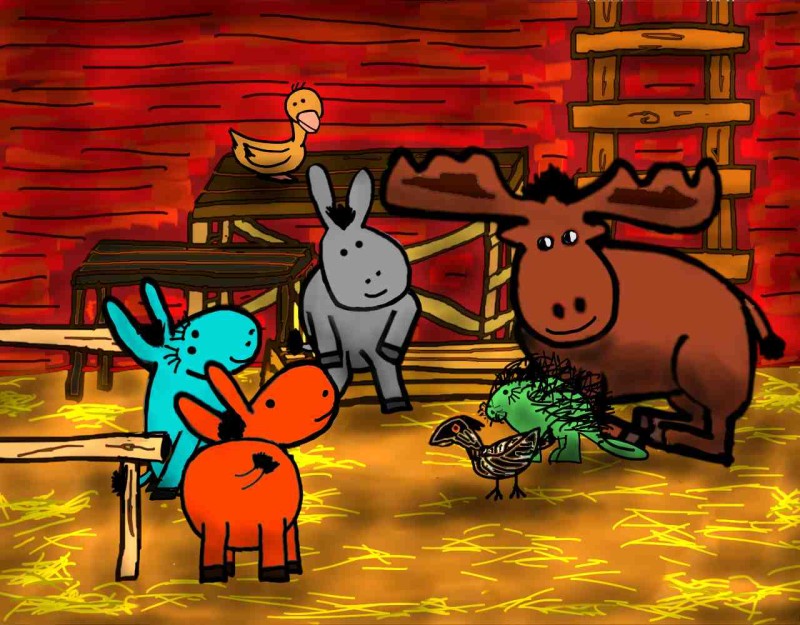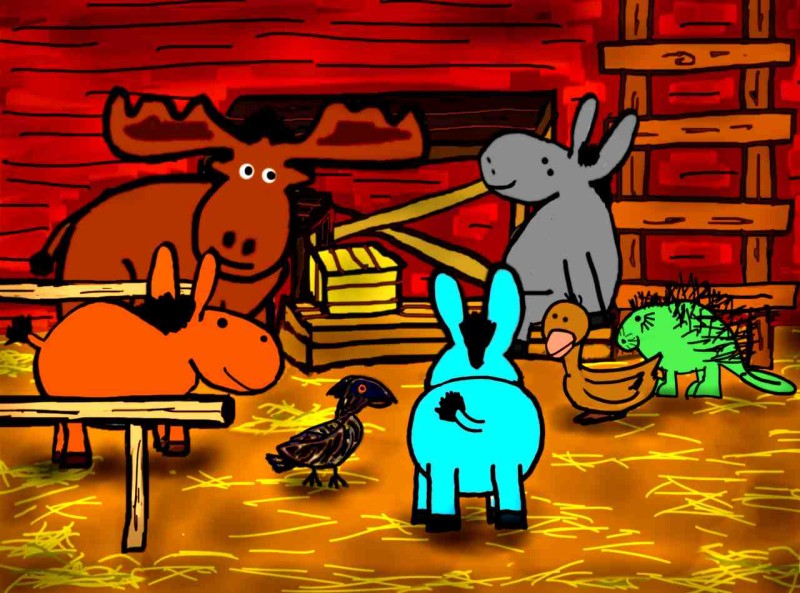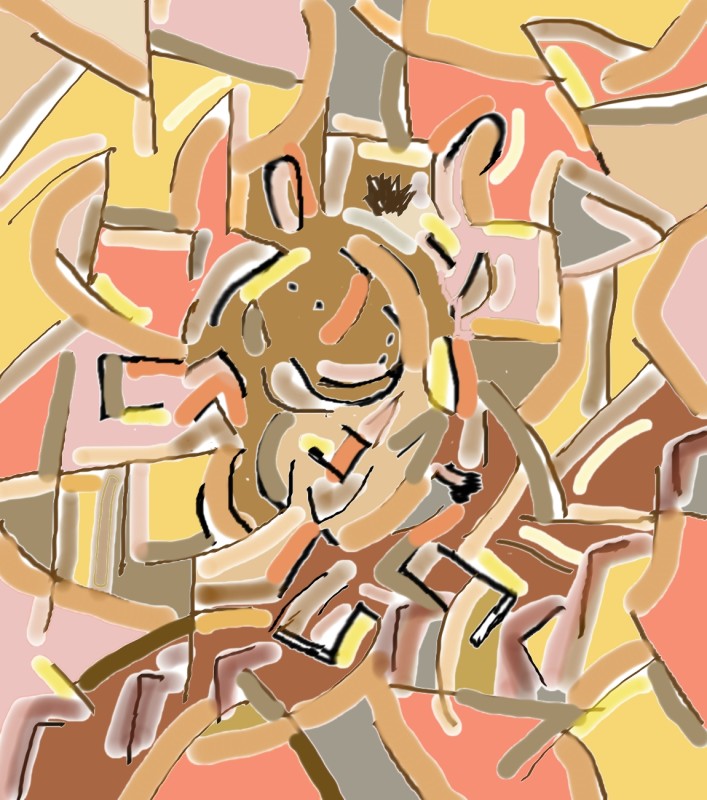Why is everyone staring? said Harlan.
Don’t mind them, said Alex, they’re just zoonophobic.
Tag: harvard
“Weohryant University” (XL)
Everywhere you go, said Blurtso, people are talking about the economic crisis. Do you think we should be worried? Worried about what? said Harlan. About our university, said Blurtso. How are we going to continue offering the services we’ve promised? What services? said Harlan. Our world-renowned classes, said Blurtso. The classes are free, said Harlan. What about our books? said Blurtso. The books are from the library, said Harlan. What about our Thursday evening pumpkin pies? said Blurtso. The pumpkins are from Pablo’s garden, said Harlan, in fact, everything in our university is absolutely free. It’s hard to believe, said Blurtso, what we’re doing isn’t against the law.
“Weohryant University” (XXVII) – Who 101
Today’s question, said Harlan, is “Who ate the last piece of pie?”
I didn’t do it, said Emma Lou.
Neither did I, said Frank.
Why is the last piece, said Morton, more important than the first?
Or any of the other pieces? said Emma Lou.
That’s a good question, said Frank.
It’s not polite, said Chelsea, to eat the first piece, and it’s greedy to eat the last.
If you didn’t get one of the earlier pieces, said Morton, it’s not greedy to eat the last.
That’s true, said Chelsea.
Who determines what is polite, said Frank, and what is not?
Baldassare Castiglione, said Glouster, wrote a book in the sixteenth century called, Il cortegiano.
Il what? said Morton.
Il cortegiano, said Glouster, is a book that describes how an educated person should behave in Renaissance Italy.
A book that defines courtesy? said Chelsea.
“Courtesy,” said Glouster, is “behavior marked by polished manners or respect for others.”
Respect for others? said Frank. That takes us back to “love thy neighbors” and the Upanishads.
Everything that’s worthwhile, said Emma Lou, takes us back to “love thy neighbors.”
Does Il cortegiano say who gets the last piece of pie? said Morton.
No, said Glouster, but it gives an outline of courteous behavior.
There’s not much of that around, said Chelsea.
Courteous behavior? said Glouster.
Yes, said Chelsea, just this morning I was crossing the street—in the crosswalk—and a truck honked me off the road.
I know what you mean, said Morton, I always say hello to people at the bus stop, but they look at me like I’m crazy.
Maybe they’ve never seen a talking donkey, said Frank.
That’s possible, said Morton.
What is Catiglione’s definition of courteous behavior? said Emma Lou.
Castiglione, said Glouster, says that a courtesan should be familiar with classical literature, skillful in athletic competition, adept in writing poetry, able to play musical instruments, accomplished in painting, conversant on philosophical themes, and knowledgeable and graceful in dance; and should be able to do these things with “sprezzatura.”
Gesundheit! said Chelsea.
Thank you, said Glouster, that was very polite, but I didn’t sneeze. “Sprezzatura” is the art of making difficult things look easy.
How do you do that? said Morton.
Practice, said Glouster.
Oh, said Morton.
Can we practice being courteous? said Chelsea.
Yes, said Emma Lou, let’s!
Well, said Glouster, we’re already reading classical literature, so we don’t have to do that, but we’ll have to start practicing sports, poetry, music, painting, and dance.
I love to dance! said Chelsea.
O.k., said Glouster, you can teach dance.
I can whistle and chirp, said Frank.
O.k., said Glouster, you can teach music.
I have a rhyming dictionary, said Emma Lou.
O.k., said Glouster, you can teach poetry.
I can draw circles with my hoof in the sand, said Morton.
O.k., said Glouster, you can teach painting.
How about moose? said Chelsea.
Moose can teach sports, said Glouster.
What will you teach? said Frank.
I’ll teach philosophy, said Glouster.
I can hardly wait to be a courtesan! said Emma Lou.
Me too! said Chelsea.
So what’s the answer, said Frank, to the original question.
The original question? said Chelsea.
Yes, said Frank, “Who ate the last piece of pie?”
The answer, said Morton, is that it’s time to bake a new pie.
“Blurtso looks at the snow” (XIII)
“Weohryant University” (XXVI) – How 101
Welcome, said Pablo, to “How 101.” Today’s question is, “How are you?”
I’m fine, said Chelsea.
So am I, said Morton.
Me too, said Emma Lou.
I’m a little thirsty, said Frank.
So am I, said Glouster.
Now that you mention it, said Morton, I’m a little hungry.
So am I, said Frank.
I’ve got an itch behind my left ear, said Chelsea.
My right front paw is a little sore, said Emma Lou.
Do you think my tail is too short? said Morton.
My feet are too big, said Glouster.
Your tail is longer than mine, said Chelsea.
My quills aren’t very shiny, said Emma Lou.
My feathers are shiny, said Frank, but my beak is too sharp.
I wish I could swim, said Morton.
I wish I could fly, said Chelsea.
I sink like a stone, said Morton.
I float, said Emma Lou, even when I try to dive.
I think I have a sty, said Frank, in my left eye.
My paw is sore, said Emma Lou.
My back is stiff, said Morton.
One of my feathers is split, said Frank.
My left ear is bothering me, said Chelsea.
I suppose we’re all one day closer to death, said Glouster, than we were yesterday.
Yes, said Emma Lou, that’s true.
What was the question? said Morton.
The question, said Glouster, was “How are you?”
I’m fine, said Morton.
So am I, said Chelsea.
Me too, said Emma Lou.
I’m a little thirsty, said Frank.
So am I, said Glouster.
“Blurtso feels good about his art exam”
Final Exam – Art 101
Name: Blurtso
1.) Name three characteristics of ancient Greek and Roman sculpture:
Large noses, round bellies, and foreshortening of the limbs.
2.) Discuss the difference between Medieval and Renaissance art:
During the Renaissance donkeys rose to a new level of importance. There were praying donkeys in the cathedrals, reclining donkeys in the fountains, and braying donkeys in the streets. The greatest example of donkeycentrism is Michelangelo’s “The Blurtso.” Michelangelo also painted the Sistine Corral.
3.) What innovation was shared by both Impressionist and Expressionist
painters, and how was it used differently by the two groups?
Pumpkin pie. The Expressionists painted their canvases before eating pumpkin pie, and the Impressionists painted their canvases after.
4.) What is Cubism?
Cubism was a style of painting developed by Georges Braque and Pablo Picasso which portrayed objects as seen from all perspectives at once. Sort of like standing naked in a room of mirrors with half a newspaper and a broken guitar.
“Blurtso feels good about his philosophy exam”
Final Exam – Philosophy 101
Name: Blurtso
1.) Describe the philosophy of Lao-Tzu:
Slow down, you’re already there.
2.) Explain the statement, “If there is no other, there is no I.”
Friends are important.
3.) What did Heraclitus say?
You can’t eat the same pumpkin pie twice.
4.) What lesson do we learn from Plato’s allegory of the cave?
It’s hard to see in the dark.
“Weohryant University” (XXIII)
The question for today’s class, said Blurtso, is: “What does two plus two equal?”
Two whats, said Morton, plus two whats?
Two cats, said Frank, plus two dogs?
I believe, said Glouster, it means the number two plus the number two, which equals four.
Four whats? said Morton.
Four of the same, said Glouster.
Is it possible to have four of the same? said Emma Lou.
What do you mean? said Morton.
Are any two things, said Emma Lou, exactly alike?
No, said Glouster, they’re not, but the number two plus the number two equals the number four because numbers are a human invention, they only exist in imagination.
So two pumpkin pies, said Morton, are not two pumpkin pies?
The name “pumpkin pie”, said Emma Lou, is an invention that refers to the “idea” of a pumpkin pie—words and numbers are ideas. There are no individual things in the universe.
What? said Chelsea.
There are no individual things, said Emma Lou.
What about me? said Morton. I’m an individual thing.
So am I, said Chelsea.
At the subatomic level, said Emma Lou, there is only the ebb and flow of energy.
E=mc², said Glouster.
Exactly, said Emma Lou.
I’m not good at math, said Chelsea.
Neither am I, said Morton.
E=mc², said Glouster, suggests that a physical system (like the universe) has a property called energy and a corresponding property called mass; the two properties are equivalent in that they are always present in the same proportion to one another. The mass–energy equivalence arose from the theory of special relativity, developed by Albert Einstein, who proposed the idea in a 1905 paper entitled, “Does the inertia of an object depend upon its energy-content?” In the equation E=mc², “E” is the amount of energy, “m” is the amount of mass, and “c” is the speed of light.
The speed of light, said Morton, is 186,000 miles per second.
Very good! said Emma Lou.
Thank you, said Morton, I remembered when Glouster told us last week.
Donkeys, said Chelsea, have very good memories.
Yes, said Morton, we do.
So what’s the point? said Frank.
The point, said Emma Lou, is that you can describe everything in the universe as either energy or mass. And if mass is energy, then everything is in a constant state of flux.
Flux? said Frank.
“Flux,” said Glouster, “is the process of flowing, the process of continual change.”
And that’s why, said Emma Lou, there are no individual things in the universe, because everything is a constant flow of changing energy.
Like a river? said Chelsea.
Yes, said Emma Lou, a river of energy.
And words and numbers, said Glouster, are inventions we use to chop the river into separate parts.
But those parts, said Emma Lou, are not really separate.
If they’re not really separate, said Morton, why do we pretend they are?
Perhaps, said Emma Lou, because we’re uncomfortable with change, and like to believe that individual, unchanging things exist.
Like individual pumpkin pies? said Morton.
Yes, said Emma Lou, and individual donkeys, crows, ducks, porcupines, and mooses.
If everything is a river of energy, said Frank, and we are all just fluctuations of a single stream, does that mean that two plus two equals one?
Yes, said Enma Lou, and it also means that Einstein, the Upanishads, and the Tao Te Ching are talking about the same thing.
“Weohryant University” (XXII) – What 101
The question for today’s class, said Blurtso, is: “What is the difference between sympathy and empathy?”
Sympathy and empathy? said Morton.
“Sympathy,” said Glouster, “is a relationship between persons or things wherein whatever affects one similarly affects the other.”
And empathy? said Chelsea.
“Empathy,” said Glouster, “is the capacity for experiencing as one’s own the feelings of another.”
That sounds like the same thing, said Frank.
Both words, said Glouster, come from the Greek word, “pathos,” meaning, “suffering, emotion, passion.” In Greek “sym” means “with” and “em” means “in.” So sympathy is “suffering with” another, while empathy is “suffering in” another.
I still don’t understand, said Morton.
Isn’t that the same as compassion? said Emma Lou.
“Compassion,” said Glouster, is “sorrow or pity aroused by the suffering of another.” It is derived from the Latin words “com” or “with” and “passion” or “suffering.”
So “compassion,” said Emma Lou, is the Latin equivalent of the Greek word “sympathy.”
Exactly, said Glouster.
That still doesn’t tell me, said Morton, the difference between sympathy and empathy.
Both words, said Glouster, imply a relationship, or “oneness” between the subject and object, between the “sympathizer” and the other.
Just like in the Upanishads, said Emma Lou, and the Tao Te Ching. Both books talk about the oneness of all things, that separation is just an illusion.
The gospel of Matthew, said Glouster, says “love your enemies.”
Does it say you and your enemies are one? said Emma Lou.
Not exactly, said Glouster, but it goes on to say, “I tell you, whatever you did for one of the least of these brothers and sisters of mine, you did for me.”
That’s pretty much the same thing, said Chelsea.
The gospel of John, said Glouster, says, “do unto others as you would have them do unto you.”
Isn’t that compassion? said Chelsea.
“Compassion,” said Emma Lou, is feeling someone else’s pain as your own. The way to do that is not to see others as separate from you.
One hundred fourteen of the one hundred fifteen verses of the Quran, said Frank, begin with “In the name of Allah the compassionate, the merciful…”
Ommmm, said moose.
What? said Glouster.
I think he said “Ommmm,” said Frank.
Ommmm (phonetically “aum”), said Emma Lou, is from the Upanishads, it is the monosyllable which contains all syllables and all sounds. It represents the oneness underlying multiplicity—the non-duality of “Brahman” beneath the dualism and illusion of “Maya.”
The illusion of Maya? said Morton.
The illusion that we are not all one, said Emma Lou.
So compassion, said Frank, is recognizing—beyond the illusion of separation—that we are all one?
Exactly, said Emma Lou.
I still don’t understand, said Morton, the difference between sympathy and empathy.
Think of it this way, said Glouster. When someone is suffering because of a specific situation, but you have not experienced that situation yourself, you can only sympathize with them, but if you have experienced that same situation, you can empathize.
That’s very confusing, said Chelsea.
Yes, said Morton, I feel exactly the same way.
